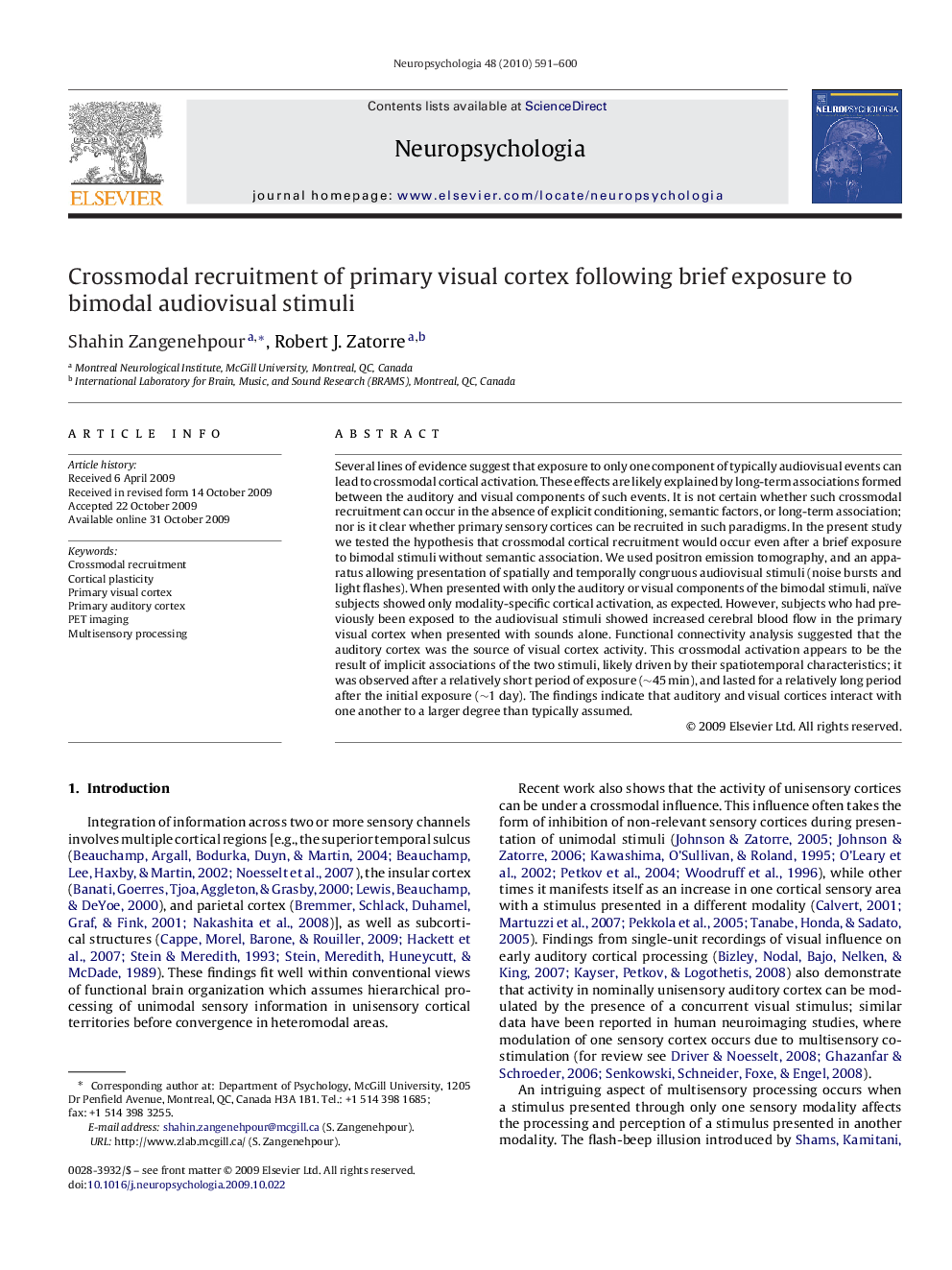| کد مقاله | کد نشریه | سال انتشار | مقاله انگلیسی | نسخه تمام متن |
|---|---|---|---|---|
| 10466464 | 925763 | 2010 | 10 صفحه PDF | دانلود رایگان |
عنوان انگلیسی مقاله ISI
Crossmodal recruitment of primary visual cortex following brief exposure to bimodal audiovisual stimuli
دانلود مقاله + سفارش ترجمه
دانلود مقاله ISI انگلیسی
رایگان برای ایرانیان
کلمات کلیدی
موضوعات مرتبط
علوم زیستی و بیوفناوری
علم عصب شناسی
علوم اعصاب رفتاری
پیش نمایش صفحه اول مقاله

چکیده انگلیسی
Several lines of evidence suggest that exposure to only one component of typically audiovisual events can lead to crossmodal cortical activation. These effects are likely explained by long-term associations formed between the auditory and visual components of such events. It is not certain whether such crossmodal recruitment can occur in the absence of explicit conditioning, semantic factors, or long-term association; nor is it clear whether primary sensory cortices can be recruited in such paradigms. In the present study we tested the hypothesis that crossmodal cortical recruitment would occur even after a brief exposure to bimodal stimuli without semantic association. We used positron emission tomography, and an apparatus allowing presentation of spatially and temporally congruous audiovisual stimuli (noise bursts and light flashes). When presented with only the auditory or visual components of the bimodal stimuli, naïve subjects showed only modality-specific cortical activation, as expected. However, subjects who had previously been exposed to the audiovisual stimuli showed increased cerebral blood flow in the primary visual cortex when presented with sounds alone. Functional connectivity analysis suggested that the auditory cortex was the source of visual cortex activity. This crossmodal activation appears to be the result of implicit associations of the two stimuli, likely driven by their spatiotemporal characteristics; it was observed after a relatively short period of exposure (â¼45Â min), and lasted for a relatively long period after the initial exposure (â¼1 day). The findings indicate that auditory and visual cortices interact with one another to a larger degree than typically assumed.
ناشر
Database: Elsevier - ScienceDirect (ساینس دایرکت)
Journal: Neuropsychologia - Volume 48, Issue 2, January 2010, Pages 591-600
Journal: Neuropsychologia - Volume 48, Issue 2, January 2010, Pages 591-600
نویسندگان
Shahin Zangenehpour, Robert J. Zatorre,